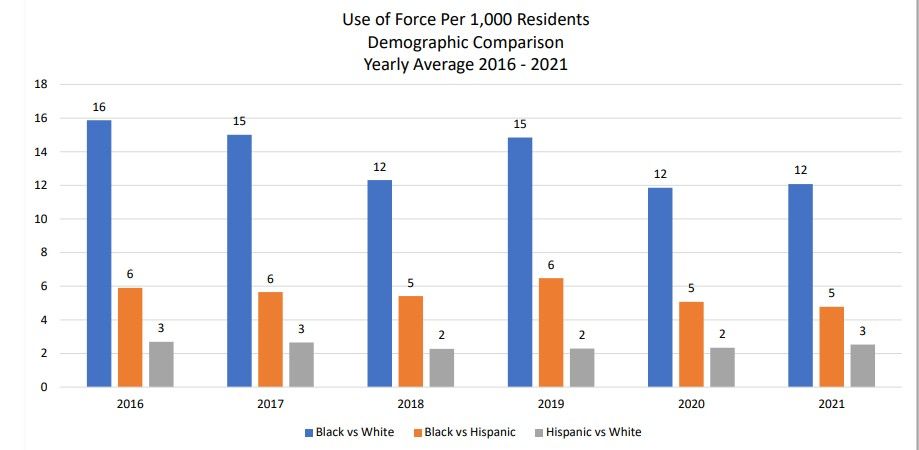The SFPD just released an internal report on their stops and use-of-force incidents, and while the SFPD has cut its use-of-force cases in half, the percentages still show overwhelming enforcement disparities against Black and Brown people.
Monday was the eight-year anniversary of the police shooting of Alex Nieto, whom officers shot oh, only about 59 times, in what would be a galvanizing case in police violence against Latino men. But it was the December 2015 shooting of Mario Woods that led to a U.S. Department of Justice review of the SFPD and the disparities in its use-of-force against Black and Brown suspects versus white suspects.
8 years ago, Mar 21 2014, four SFPD officers murdered 28-year-old Alex Nieto, a lifelong resident of Bernal Heights, on Bernal Hill. In Mar 2016, all four officers were acquitted. His death and the acquittal sparked a wave of struggles against police brutality throughout the bay pic.twitter.com/PCAobUcjTc
— Left in the Bay (@leftinthebay) March 21, 2022
In a sense, that DOJ review is still reverberating with the SFPD literally today. SFPD Chief Bill Scott will be called in to today’s SF Board of Supervisors meeting for what is charitably described on paper as an “Update on Findings and Recommendations Regarding Law Enforcement Practices.” But there will be no board vote on this, just updates from Scott, and plenty of anticipated bloviating by the supervisors. (The hearing is scheduled for 3 p.m. on SFGovTV, should you have an appetite for this sort of thing.)
But there’s not much point in watching; Chief Scott’s 19-slide PowerPoint presentation with all of the findings has already been made public. NBC Bay Area has gone through it all, and reports that SFPD traffic stops and use-of-force cases are still overwhelmingly against people of color.
“Most stops and searches involved Black people and by a wide margin,” according to NBC Bay Area. “Black people were stopped and searched far more frequently than their white and Hispanic counterparts. The breakdown by race per 1,000 interactions shows year over year, Black people were 10 times as likely to be searched as white people and four times as likely as Hispanic people.”

First the good news. Looking at five full years’ worth of data, SFPD use-of-force incidents are down by more than half since their Greg Suhr era peak. Overall use-of-force cases have tipped up slightly since a shelter-in-place-era pandemic low. But the above numbers, which count all cases, regardless of the suspect’s race, are certainly trending in a good direction.

Now the bad news. Above we see SFPD use-of-force cases broken down by race, and the racial disparities are effectively unchanged over these same five years. Black suspects are still twelve times more likely to have force used against them by SFPD than are white suspects. Latinx suspects, meanwhile, are three times more likely than white suspects to have SFPD use force against them, the exact same rate as five years ago.
“It’s definitely something we acknowledge ... has been a struggle,” Chief Scott said in an interview with the Chronicle. “This is one that we have to really continue to work out to get to a better place.”
Tuesday’s hearing will come against the backdrop of the recent first use-of-force trial against an SFPD officer, wherein the victim was a Black man, though the officer was acquitted. That may or may not be a political win for the department, and the “SFPD Did nothing” stories are still all over the media. (Heather Knight had yet another one in the Chronicle this weekend.)
So while Chief Scott and the SFPD may not be facing a recall election, they may not be any more popular than the district attorney with whom they so publicly spar.
Image: @sfvas via Twitter

